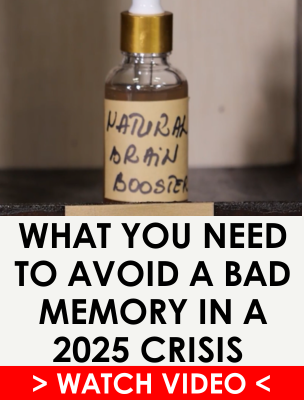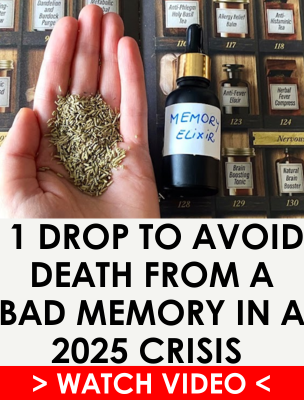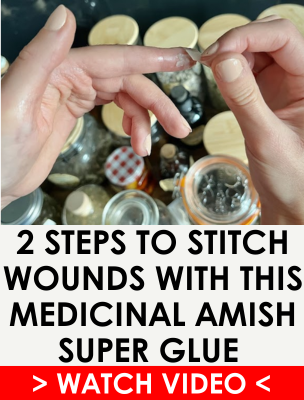In less developed nations, people don’t make as much money as in the “so-called” developed nations. This gives certain folks from these nations excellent survival problem solving skills because money tends to stunt survival problem solving skills because it encourages us to reach for our wallets instead of our toolboxes.
Because solving their problems with money is not an option for many in developing nations, their problem-solving skills develop normally. My wife is such a person. She grew up in Northeast Brazil in the state of Paraíba.
She couldn’t count on the electricity staying on or water to come out of the faucet every time she turned it. The family home is simple, lacking glass windows, air conditioning and hot water. Meals are cooked on a gas stove, supplied by a cylinder. In many respects, daily life is much like camping in the US, only it is permanent.
I enjoy observing Brazilian survival hacks and will share a few with you.
-
Fireworks for Communication
Brazilian survival hacks are cheap and effective. In some neighborhoods, specific types of fireworks are used for communication, alerting the community when the local drug trafficker has received his shipment or when police have entered the neighborhood. This gives people a chance to get behind hard cover in case bullets start flying.
Liberals might be surprised to learn that criminals have no problem finding firearms and ammunition in a country with such strict gun control laws. Such laws only deprive the law abiding of their right to self-defense. Murderers don’t care if they are breaking one more law. Only law-abiding citizens care about that.
-
Cover Your Face with a T-shirt
There isn’t a lot of snow in Brazil, so ski masks are uncommon. So, when a Brazilian does something he’s not proud of, he improvises a balaclava from a t-shirt. This is a survival skill every survivalist should learn, both to keep warm and as a method to hide your face from cameras.
Larger T-shirts work best. The T-shirt can be either long or short sleeved. I say “T-shirt”, but a long-sleeved polypropylene or merino wool blend base layer works just as well and provides more warmth in cold weather. You don’t have to cut the t-shirt and tying the head covering can be accomplished in seconds.
T-shirt Balaclava:
- Step 1 – Put the T-shirt on normally but stop when the collar hits the bridge of your nose.
- Step 2 – Bring the tail of the T-shirt up over your head and pull it tight around your forehead, covering your eyebrows. (Pro tip missed by Bryan Kohberger.)
- Step 3 – Pull the sleeves tight behind your head and tie them in an overhand knot. As T-shirts are typically somewhat elastic, an overhand knot is usually all that is necessary, but a square knot will ensure that it will not come undone if you have enough fabric to work with.
I like this hack because a base layer has more uses than a balaclava and T-shirts are cheap and easily procured in urban environments.
-
Oil Lamp
The oil lamp has been used for light and heat for a very long time, with the oldest known examples dating to at least 12,000-15,000 years ago. In its simplest form, as oil lamp is a glob of oil or fat on a curved stone or pottery fragment to form a shallow dish and a wick.
Today, the electric light from LEDs is much safer and brighter than using oil lamps, but batteries and LEDs cost money. If you need to make light without spending any money, the oil lamp has been getting the job done for millennia.
In Brazil, simple oil lamps were made by sticking a wick holder and wick in a can such as a butter tin. A slightly fancier, and safer, lamp was made by sealing the mouth of a zinc coated funnel and inserting a wick holder in the narrow end, making a very stable oil lamp that was difficult to overturn.
In an urban environment, a simple oil lamp can be improvised from a metal can. For the wick, cotton is the most effective material when available. A strand from a cotton mophead makes a very effective wick. A mophead procured from a dollar store, secondhand store or a janitorial closet will provide dozens of wicks at a bargain price.
-
Water Storage in the Shower
When I first began traveling to Brazil, we could not depend on the water to flow from the faucet on demand. This problem was solved by buying a new plastic trash can, washing it, placing it in the shower, and filling it with water. A large plastic cup was dipped in the water and poured over the body to get wet, soap was lathered, and cups of water were used to rinse. If it leaks, it’s already in the shower so the water will go down the drain.
The solution was practical, inexpensive and low-tech, but adequate to meet the family’s immediate need. Most problems were solved in similar fashion. Nothing fancy and just enough work was performed to solve the problem.
-
Dry Clothing on the Back of the Refrigerator on Cloudy Days
The washing machine is a luxury that is taken for granted by anyone who has never washed a load of laundry without one. When my grandmother received her first washing machine in the 1940’s, she wrote that she, “felt like a woman of leisure.” My wife’s family did not own a washing machine until the 2000’s. Her father, a diesel mechanic, sat talking to the washing machine, caressing it, and telling it what a good machine it was.
Today, they own a washing machine, but they still hang laundry out to dry. On rainy days, which are not uncommon, laundry must be dried indoors, which is a slow process in the humid climate, which often exceeds 80%. On such days, the refrigerator is pulled out from the wall, the coils on the back of the refrigerator are cleaned, and the most important articles of clothing are hung on them, where they are dried by the heat that they generate.
-
Use a Shopping Cart as a Grill
A metal shopping cart can serve as a grill when turned on its side and laid on the ground. A fire is built in the basket, and food can then be cooked directly on the metal wire or in pans placed on them.
-
Terra Cotta Water Filter
In the USA, I had always seen survivalists use plastic or shiny stainless-steel Berkey-style gravity filters. They look nice and very hygienic and appeal to the US market. In Brazil, we use terra cotta gravity filters. The main benefit is that water is drawn into the terra cotta body of the filter where it evaporates, cooling the water noticeably. This is no minor detail because cool water is always so much more refreshing than warm water. When we want cold water to drink, we put it in the refrigerator.
It reminded me of terra cotta strawberry planter pots that I used when I lived in Arizona. They had many tiers of little balconies to grow the strawberries in, and when the strawberries are watered, the same evaporative cooling effect that was so noticeable in the terra cotta gravity filter takes place, cooling the delicate strawberry plants, enabling them to be grown at lower altitudes than they are found in nature.
The process of making terra cotta is about as low tech as it gets in pottery making. Terra cotta should not be overlooked as a technology to slow the spoilage of food in survival situations. I was surprised to learn how effective it is.
-
Stop Ants with Oil
Ants can be a problem in Brazil, especially anywhere sugar is stored. To prevent ants from climbing shelves and cupboards, furniture legs are sometimes set in small tubs like butter comes in, which are filled with motor oil or another oil.
Another option is to hang sugary drinks from the rafters. In my experience, the ants won’t typically go all the way up to the roof and then all the way down the string.
-
Witch Hazel for Mosquito Bites
Witch hazel is a multiuse topical medicine that is generally safe to use on toddlers when applied to the skin. It is an astringent, antiseptic, and antipruritic (stops itching). It even appears to have hemostatic properties (slows bleeding.) It is most often used to relieve hemorrhoids, for insect bites (especially weeping or inflamed bites) and minor scrapes.
Since it is multi-use, soothing and doesn’t sting, it is my go-to topical medicine for our toddler, who gets a lot of scrapes and bug bites. A few drops of witch hazel and a Paw Patrol Band-Aid usually fixes him right up.
I discovered that it is a first rate antipruritic for mosquito bites when I ran out of sting swabs on a trip to Brazil. I remembered that Tuck’s pads were loaded with witch hazel, gave it a try and now it’s the first thing I reach for. I carry 3-6ml in a little eye dropper bottle and it does wonders for mosquito bites.
I don’t recommend taking it orally, as I have not seen proof that it is effective for any condition when taken orally. Taking witch hazel orally is also potentially dangerous and don’t use it with rosacea or on dry skin.
-
Home Remedies
When you don’t always have access to healthcare, home remedies play an especially important role, but we use them even though we do have access to healthcare. Please read about some of our favorite home remedies here. Also check out Nicole Apelian’s excellent products on the subject!
Summary
The survival/self-reliance community is truly the salt of the Earth, and I hope that examining everyday adaptations from other cultures helps you to be better prepared as it has for me.






















































































There is strength in community, but will they have supplies beyond conventionally thought of basics?
First Aid will not be enough when it is intended to be followed by hospitalization and professional medical services that will not be available in scenarios which we should consider now for our preparedness.
A wound can be contaminated by whatever broke the skin and the environment and perhaps deadly bacterial infection can result from even an otherwise minor wound. The bacterial invasiveness is swift, so fast action in cleaning the wound of contamination is imperative and much more so in future times of societal collapse and no hospital availability.
For that, I have pressure canned in quart canning jars of distilled water with 0.9% pharmaceutical grade sodium chloride otherwise known as sterile saline solution.
To use it, I have new (uncontaminated) hand pumped sprayers with nozzles that can be adjusted to a powerful needle like stream that stings, so it would dislodge and flush out dirt and contamination from a wound. Best, of all it is already ready because with a delay, the pathogens have already invaded the body at a scale that might overwhelm all but the most amazing immune systems for which I’m blessed to have. Still, I don’t want to bet my life on that, so I’ll be glad I prepared in advance to quickly flush out contamination from wounds.
Study the world of more than just First Aid and include what you can regarding medical into your preparedness. I keep adding to my preparedness skills, knowledge and supplies in multiple categories.
I’ve even taken many courses in assisting childbirth and perhaps, in the harsh times to come, it will be for my future family though “What kind of car does he drive?” seems typical of the prevailing questions in society today instead of “Can keep keep me and my future children alive and living in freedom?”
[email protected]
Yes, I think people able to spot the fragility in our world ask different questions that those who cannot see it or those who see it and pretend they haven’t.
Thanks for reading and commenting Ronald!
-Cache
Cache, Exactly! The point your readers need to integrate into their preparedness thinking that most can’t visualize now is we need to be using our imagination now to include things we’re missing into our preparedness. It’s these examples of differences between our modern times of affluence now and what will be valuable in the harsh times to come that can be easily stocked now, yet ignored now because so many things are so abundant now that we consider them to be of no value and send them off to landfills. Water tops most preparedness lists of importance for sustaining life, so much so that it is in The Rules of Three, yet you can’t simply hand someone some water because it will run through your fingers. Archeological evidence of earlier civilizations is often fragments of pottery. We can learn how to refine a clay deposit, make a vessel, fire it with glaze to do the same, but those that did all that skilled work in ancient times to enable the necessity of life ability to haul water would marvel at the glass jar that once contained olives that I ate. That would be a treasure to those ancient civilizations, yet how incredulous would they be to learn that we throw those jars away and don’t value them at all! Similarly, we can study primitive living skills for preparedness. Sure, I know them and can do them, but how much better is a real modern fishing hook made from tempered spring wire with a sticky sharp point, a barb and an eye compared to making what might sometimes work out of a thorn, a shell or a stick, particularly since we can have this now with the smallest coin in our pocket!
Pick and choose which primitive skills must be necessities versus the ones that can easily be replaced for much better for free or at a cost so low that it doesn’t change our budget.
Cache. Survivopedia is excellent! You are doing just fine with excellent content! Yet, the greatest improvement that can be made, is up to us, the readers, who need to add comments and discussion because as I commented in a previous article that Jim Phillips’ teachings on the preparedness value of community tells us one person can’t do or know or think of everything, we have a preparedness community right here among readers sharing their thoughts yet we can greatly enhance that.. We, readers, need to do that more as opposed to just follow thought leaders and experts since we have all been Created differently, have lived in different areas, with different experiences and have learned different things. Discussions, not just posting, leads to more concepts and topics leading to more discussions. That’s up to us to do this improvement, not you, Cache, your readers, so I say to us, let’s become more interactive and participatory. Let the discussions begin! (One idea for facilitating that is to have your website developer integrate instant notice of and a link directly to the latest comment added because a prompt notice and quick discussion responses make the discussions more natural and more present time as generally the case with discussions.)
There was some discussion about creating an online community many years ago. I liked the idea and hoped that we would. There are some forums that fill that role, but I would like to do here as well.
Hello and this is a good read! I did not quite understand what you were getting at for #7 but I have been using #3 and #9 for many years.
Thanks and make it a great day!…
Yeah, I agree that 3 and 7 are too vague. Does butter come in a metal container in Brazil? What would be the US equivalent? Any pointers on making a terra cotta filter?
Yes, I think some photos would have been helpful, but that’s above my pay grade.
Yes, butter and margarine are available in cans in some countries, although it is becoming harder to find canned butter than it used to be. I have bought Red Feather Brand canned butter and cheese, made in New Zealand, here in the USA in the past.
But for the purposes of creating an oil lamp, the container doesn’t matter so much. Anything that will hold the oil and is resistant to catching fire will work. The article was not intended to be a DIY article, but there are a ton of oil lamp DIY projects out there and every survivalist should learn how to make an oil lamp. When my wife was growing up, every home in her neighborhood had one and seeing one is nostalgic for her. The power is getting to be more reliable in our neighborhood now, but as the recent outage in Portugal and Spain demonstrated, any electrical grid an go dark at any time.
As for the terra cotta water filter, it is a gravity filter like a Berkey or a DIY gravity filter like those made from 5-gallon buckets. I’m sure you can buy a terra cotta filter body online or you could certainly make one. If you do, I would buy the spigot and filter cartridges first and then mold the two-chamber vessel based on the hardware you plan to use since the size of the holes for the spigot and filter cartridges will have to be in the ballpark of the gaskets you are using after the body is fired and cools. I’m not an expert at earthenware pottery myself, but I know people who are, and I think it sounds like a fun project
Thanks for reading and commenting!
Kind regards,
Cache
Regarding item 6, be certain that the plating on the metal grids of a shopping cart are not cadmium plated. The heat from the fire may become hot enough to vaporize some cadmium with unfortunate results. Placing food directly onto cadmium plated grids to grill is quite hazardous.